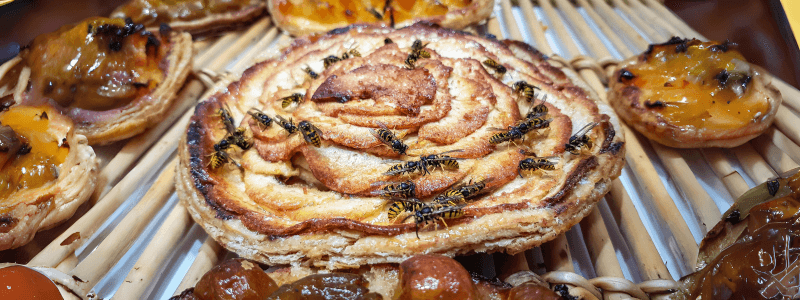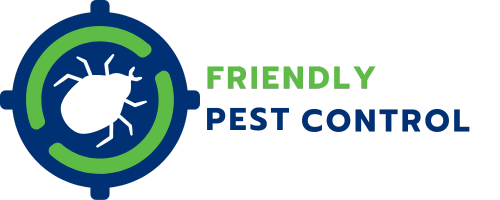Conquering Wasps in Australia: A Guide to Safe and Effective Nest Removal
For many Australians, the arrival of warmer weather brings sunshine, barbecues, and…wasps. These buzzing insects, while beneficial to the environment as pollinators, can become a nuisance and even a safety hazard when they build nests near your home. If you’ve discovered wasps in Australia taking up residence on your property, don’t panic. This comprehensive guide will equip you with the knowledge and strategies to safely remove wasp nests and prevent future infestations.
Identifying Wasps in Australia
The first step to tackling a wasp problem is proper identification. Australia is home to a diverse range of wasp species, each with distinct appearances and behaviours. Here’s a breakdown of some common wasps you might encounter:
- Paper Wasps: These slender wasps with brown and yellow markings build open-faced, umbrella-shaped nests under eaves, roofs, and sheltered areas. While they can sting, paper wasps are generally less aggressive than other species.
- Yellowjackets: These black and yellow wasps are known for their aggressive behaviour and painful stings. They often build underground nests, making them tricky to locate.
- Mud Wasps: Solitary wasps, mud wasps construct single-celled mud nests on walls, fences, and sheltered areas. They rarely sting humans unless provoked.
- Bull Ants: While not technically wasps, bull ants can inflict a painful sting. They build underground nests and are known for their aggressive behaviour.
Remember: Accurate identification is crucial. Some wasps, like paper wasps, play a valuable role in the ecosystem. Consider removing nests only if they pose a safety threat or significant nuisance.

Understanding Wasp Nests in Australia
Wasp nests in Australia come in various forms depending on the species:
- Paper wasp nests: These are brown, papery structures with an open honeycomb appearance. They’re typically found under eaves, roofs, and sheltered areas.
- Yellowjacket nests: Located underground, yellowjacket nests are hidden and challenging to identify.
- Mud wasp nests: Solitary mud wasps create single-celled, brown, mud structures attached to walls and sheltered areas.
- Bull ant nests: Bull ants build extensive underground networks with multiple entrances.
If you suspect a wasp nest on your property, observe wasp activity to identify the location and entrance point.
Approaches to Wasp Nest Removal in Australia
Safety First: Before attempting any wasp nest removal in Australia, prioritize safety. Here are some essential precautions:
- Identify the wasps: Ensure you’re dealing with wasps and not bees. Bees are crucial pollinators and should be left undisturbed.
- Wear protective clothing: Don long sleeves, pants, gloves, and a hat to minimize exposed skin. Consider using a bee suit for added protection.
- Work at night: Wasps are less active during the cooler nighttime hours.
- Alert family and neighbours: Inform them about the wasp removal process to avoid accidental stings.
DIY Wasp Nest Removal (for paper wasp nests only):
If you’re confident and dealing with a small paper wasp nest, you can attempt DIY removal. Here’s what you’ll need:
- Heavy-duty gloves
- Long-sleeved shirt and pants
- Broom or scraper
- Large plastic bag with a lid
- Insecticide spray (optional)
Steps:
- Wait for nightfall: When wasps are less active.
- Locate the nest: Wear protective clothing and approach the nest cautiously.
- Dislodge the nest: Using a broom or scraper, dislodge the nest from its attachment point and quickly place the open bag over it. Secure the bag tightly.
- Dispose of the nest: Relocate the sealed bag far away from your home and release the wasps (if desired) in a safe, unpopulated area. Alternatively, spray the bag with insecticide before disposing of it.
Natural Remedies (for all nests):
For a more eco-friendly approach, try these natural remedies after dark:
- Soapy water: Mix hot water with dish soap and spray the nest thoroughly. This disrupts the nest’s structure and may deter wasps.
- Peppermint oil: Wasps dislike the strong scent of peppermint. Soak cotton balls in peppermint oil and place them strategically near the nest entrance.
Important Note: These methods may not permanently eliminate the nest and could provoke the wasps. Use them with caution and consider professional help for significant infestations.
When to Call Friendly Pest Control Melbourne
In many situations, seeking professional help from a reputable pest control company like pest control Melbourne Australia is the safest and most effective solution. Consider professional intervention for:
- Large or high nests: Removing large or high nests yourself can be dangerous. Professionals have the necessary equipment
- Aggressive wasps (yellowjackets, bull ants): Dealing with aggressive wasp species like yellowjackets or bull ants is best left to professionals. Their stinging behaviour can be a serious threat, and DIY removal attempts could lead to multiple stings.
- Underground nests: Locating and safely removing underground nests, like those of yellowjackets, is challenging for DIY solutions. Professionals have the expertise and tools to handle these situations effectively.
- Allergies or phobias: If you have allergies to wasp stings or a severe phobia of wasps in Australia, avoid any DIY attempts. Professional pest control companies in Melbourne, Australia, can safely and efficiently remove the nest without putting you at risk.
- Multiple nests: Extensive wasp infestations require a strategic approach. Professionals can identify all nests, develop a targeted removal plan, and ensure complete eradication.
Benefits of Professional Pest Control Melbourne Australia:
- Safety: Trained professionals prioritize safety, utilizing appropriate protective gear and techniques to minimize risk.
- Expertise: They possess the knowledge and experience to identify wasp species, locate nests, and choose the most effective removal method.
- Efficiency: Professionals can quickly and effectively remove nests, minimizing disruption to your daily life.
- Preventative Measures: Many pest control companies in Melbourne, Australia, offer preventative measures to deter future wasp infestations.
Finding a Reputable Pest Control Company:
- Research and compare: Look for companies with experience in wasp nest removal in Australia.
- Licensing and insurance: insure the company is certified and ensured to operate in your area.
- Quote and treatment plan: Request a detailed quote and ask about the specific treatment plan they propose.
- Safety protocols: Inquire about the safety measures they take during wasp nest removal.
I would like to highly recommend Friendly Pest Control for Wasp Nest removal. They have a good reputation when it comes to wasps services or in fact any pest control service.
Preventing Wasp Infestations in Australia:
- Minimize attractants: Eliminate potential food sources for wasps, such as overflowing garbage bins, open food containers, and sugary spills.
- Seal entry points: Seal cracks and gaps around windows, doors, and other potential entry points into your home.
- Cover outdoor bins: Keep your outdoor bins tightly sealed to prevent wasps from accessing food scraps.
- Discourage nesting sites: Remove potential nesting sites by clearing clutter from under eaves, porches, and other sheltered areas.
By following these strategies and remaining vigilant, you can effectively manage wasp populations around your Australian home. Remember, if you’re unsure about DIY removal or dealing with aggressive wasps, don’t hesitate to contact a reputable pest control company like pest control Melbourne Australia. Their expertise and safe methods will ensure a wasp-free environment for you and your family.
Additional Tips:
- Early intervention is key: Addressing wasp problems early on is easier and less disruptive than dealing with large, established nests.
- Be patient: Removing wasp nests and preventing future infestations may require ongoing efforts.
- Respect the ecosystem: While wasps can be a nuisance, they play a vital role in the environment. Consider relocating nests when possible, rather than resorting to complete eradication.
With the information provided in this comprehensive guide, you’re well-equipped to tackle wasp problems in Australia. Remember, safety is paramount. By taking the appropriate precautions and considering professional help when necessary, you can reclaim your outdoor space and enjoy a wasp-free summer.
